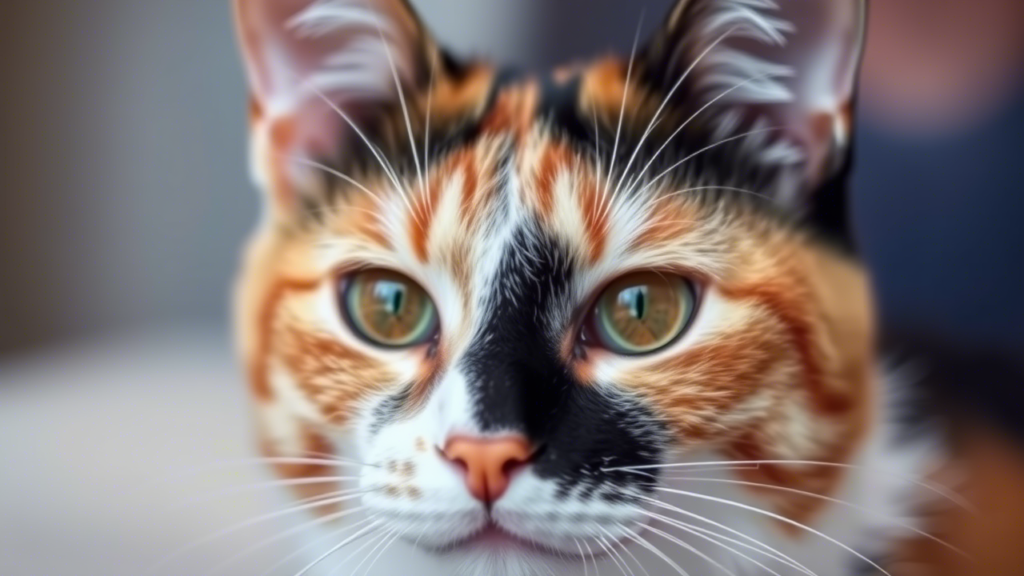Calico Cats 101: Everything You Need to Know About These Tri-Colored Felines
calico cats ( breed, autistic, female, price, lucky, personality, are female because, Tortoiseshell calico cat, are always female, rare, for sale, x inactivation )
Introduction: The Allure of the Calico Cat
If you’ve ever laid eyes on a calico cat, you’ve likely been struck by their strikingly beautiful tri-colored fur. These cats are a visual feast, with their vibrant patches of orange, black, and white – or sometimes gray, cream, and gold – scattered across their coats. But there’s more to calico cats than just their dazzling appearance. They’re known for their strong personalities, intriguing genetics, and a rich history.

In this comprehensive guide, we’ll walk you through everything you need to know about calico cats, from their unique coat patterns and genetics to their temperament, care, and myths that surround them. Whether you’re considering adopting one or simply fascinated by these captivating cats, this article will give you all the insight you need.
What Exactly Are Calico Cats?
First, let’s get one thing clear: calico isn’t a breed of cat, it’s a coat pattern. The term refers to cats whose coats consist of three distinct colors – usually white, black, and orange (or their diluted versions such as gray and cream). The combination of these colors can vary widely from one cat to another, but what’s consistent is their unique tri-color look.
Calico cats can be classified into three main types:
- Classic Calico: The typical combination of black, orange, and white, often in large patches.
- Dilute Calico: These cats have lighter versions of the traditional colors, such as gray (diluted black), cream (diluted orange), and white.
- Tortoiseshell (Tortie) Calico: A variation where the cat has a calico pattern, but the black and orange are mixed more closely, creating a marbled or brindled look.
While their coat colors are the main defining feature, it’s worth noting that calico cats can come in many different shapes and sizes depending on their breed. You’ll find calicos in breeds like the American Shorthair, Persian, Maine Coon, and British Shorthair.
The Genetics Behind Calico Cats
The fascinating coat patterns of calico cats are the result of their genetics. To understand how a calico cat comes to be, we need to dive into a bit of basic biology.
How Genetics Creates the Calico Coat
The gene that determines whether a cat will have the calico pattern is found on the X chromosome. Female cats have two X chromosomes, while male cats have one X and one Y chromosome. The color variation in calico cats happens due to the random inactivation of one of the X chromosomes in female cats. This causes the cat to have a mixture of orange (red) and black fur patches, which may appear to be a “mosaic” of color.
- Orange (Red) Fur: The gene responsible for orange fur is carried on the X chromosome. When a cat inherits this gene, it will display orange fur.
- Black Fur: The black coloration is also linked to an X chromosome, but in the presence of an active black allele, the cat will display black fur.
- White Fur: White is not linked to the X chromosome but instead is a separate genetic trait that causes certain areas of the cat’s body to lack pigmentation altogether.
Because male cats have only one X chromosome, it’s rare for them to have a calico coat unless they have a genetic condition called Klinefelter syndrome, where they inherit two X chromosomes and one Y chromosome. This means that calico males are extremely rare, occurring in about 1 in 3,000 calico cats.
Why Are Calico Cats Mostly Female?
It’s the combination of having two X chromosomes and the way those chromosomes interact that gives female cats the ability to express the calico pattern. This is why calicos are almost always female, with males being a rare genetic anomaly.
Temperament: What Are Calico Cats Like?
Calico cats have a reputation for being strong-willed and sometimes even feisty, but every cat is an individual, and that’s certainly true for calicos. Still, there are some general observations when it comes to their behavior.
Are Calico Cats More Independent?
Many people report that calico cats tend to be more independent and sometimes even more demanding than other cats. This could be a result of their genetic makeup, as the combination of black and orange fur often correlates with a more spirited temperament.
While calicos can be affectionate, they are known to form deep, sometimes one-sided bonds with their owners. They may choose to bond more with one person, but they are also very social and can get along well with children and other pets when properly socialized.
That said, calico cats can also have an independent streak, and they may prefer doing things on their own terms. They’re often described as “sassy” or “opinionated” because they like to make their own decisions about when to cuddle, play, or demand attention.
The History of Calico Cats
The history of calico cats is both rich and mysterious. While their distinctive appearance has made them popular worldwide, the exact origins of the calico pattern are unclear. Some speculate that they were first seen in Egypt, where cats were revered, while others believe that the pattern appeared in Europe and Asia.
The name “calico” itself is believed to have been derived from the word “Calicut,” a port in India, where the fabric of similar color patterns was once traded. The pattern’s association with different cultures, as well as the variety of breeds that display it, shows how widespread and adored these cats have been throughout history.
Caring for a Calico Cat
Like all cats, calico cats require proper care to ensure they lead a healthy, happy life. While their personalities may vary, there are general care guidelines that every calico cat owner should follow.
Diet and Nutrition of Calico Cats
Calico cats, depending on their breed, may have specific dietary needs. Make sure to provide a well-balanced diet of high-quality cat food that meets your cat’s age, weight, and health requirements. Always consult with your vet if you’re unsure about what food is best for your calico.
Grooming of Calico Cats
Calico cats come in both short-haired and long-haired varieties, so grooming needs will vary. Long-haired calicos, such as those of Persian descent, will require more frequent brushing to prevent matting. Short-haired calicos, while easier to maintain, still benefit from regular brushing to keep their coat shiny and healthy.
Health and Wellness of Calico Cats
Calico cats don’t have any specific health problems associated with their coat color, but as with any cat, they may be prone to certain breed-related health conditions. For example, Persian calicos may have issues related to their flat faces, while Maine Coon calicos may be prone to heart disease.
Regular vet check-ups are important to keep your calico cat in top shape. Also, make sure to keep them up-to-date on vaccinations, flea prevention, and other health needs.
Fun Facts About Calico Cats
- Symbol of Luck: In some cultures, calico cats are considered symbols of good fortune. In Japan, for example, the famous “Maneki-neko” or “beckoning cat” is often depicted as a calico, believed to bring prosperity.
- Calico Cats and Superstitions: Due to their unique appearance, calico cats have been subjects of myths and superstitions. Some say they bring good luck, while others associate them with a more mystical or mysterious aura.
- Unusual Genetics: The genetics behind calico cats is so fascinating that scientists have even used them to study how traits are inherited and expressed in living organisms.
Conclusion: The Irresistible Charm of Calico Cats
Calico cats are far more than just pretty faces. Their vibrant coats, strong personalities, and intriguing genetics make them one of the most fascinating felines around. Whether you’re drawn to their beauty, their independence, or their quirky temperament, it’s easy to see why calicos are beloved by so many.
If you’re lucky enough to share your life with one of these tri-colored wonders, remember that while their appearance may be unique, each calico cat is an individual with her own special traits. So, enjoy getting to know your calico and appreciate all the charm that comes with being a cat parent to one of these captivating creatures.
FAQ:
1. Are all calico cats female?
Yes, nearly all calico cats are female, due to the genetics of coat color inheritance. Male calico cats are extremely rare, occurring in about 1 in 3,000 cases.
2. Can calico cats be aggressive?
Calico cats are known for their independent and sometimes strong-willed personalities. While they’re generally not aggressive, they can be a bit sassy or feisty at times, especially if they don’t feel like being handled.
3. Do calico cats have any special health concerns?
Calico cats don’t have any unique health issues tied directly to their coat color, but as with any cat, they can be prone to breed-specific conditions. Regular vet visits are important to maintain their health.
4. Can a calico cat live with other pets?
Yes! With proper socialization, calico cats can get along well with other pets, including dogs and other cats. They tend to form strong bonds with their human families but can also coexist peacefully with other animals in the household
